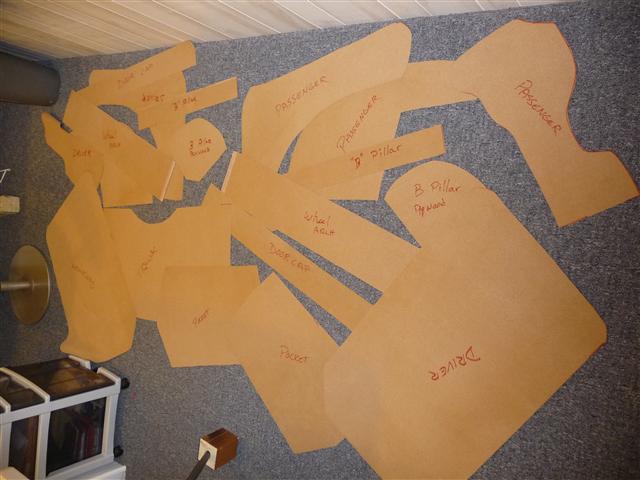|
I
Can't Sew!!!!!!!
| OMG..........all
of these pieces have to be sewn and/or glued
and stapled! |
 |
This is one of those projects
that I've thought about for a while but was always
concerned that I didn't have all of the skill sets
needed to pull this off. I knew I could make the
assorted backboards..........that's just simple
carpentry which is something I've done my whole life. I
knew I could mount a vinyl or leather to the backboards............that's
just glue and staples. But I didn't know if I could do the sewing.
Especially when we didn't even have a sewing machine. My
first stop was to post the question in the 6-Pack Forum
and I very quickly got a couple of responses including
one fellow, David Harris, whose Mom taught him to sew at
a young age. David posted some pictures of his work, all
in leather, which included: Miata Seat covers, all
interior panels, door caps, crash pads, sun visor,
custom made center console between the seats
and.............the center dash support. All done is a
blue leather with perfect stitching. Heck, he even made
his own seat belts to match the leather. He also had an
industrial strength sewing machine.
My plan was to make 2 or 3
sets out of vinyl and, hopefully, sell them on eBay and
then make my set out of leather. Which is pretty much
what happened..........my first set went on eBay, the
second set went to a 6-Pack member and the 3rd set went
to a guy who saw the eBay set and asked if I'd make a
set for him.
Practice is over and it's
time for the real game to begin.
Let's start with making
the templates
|
